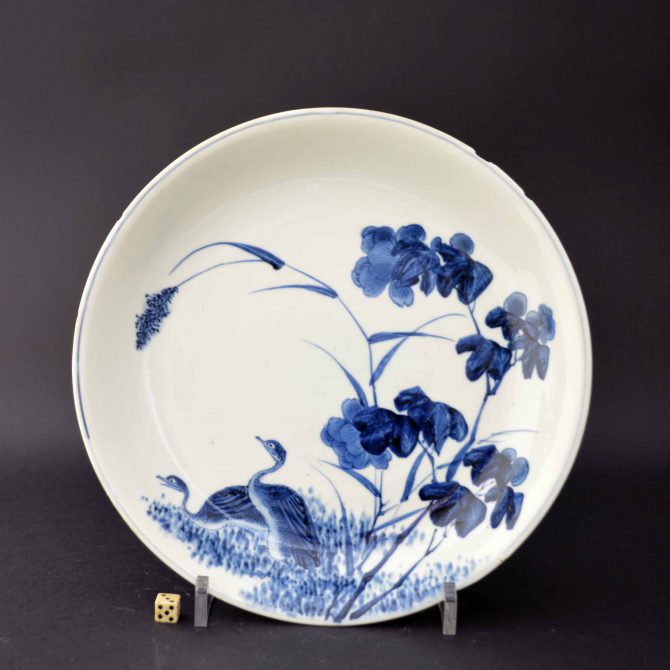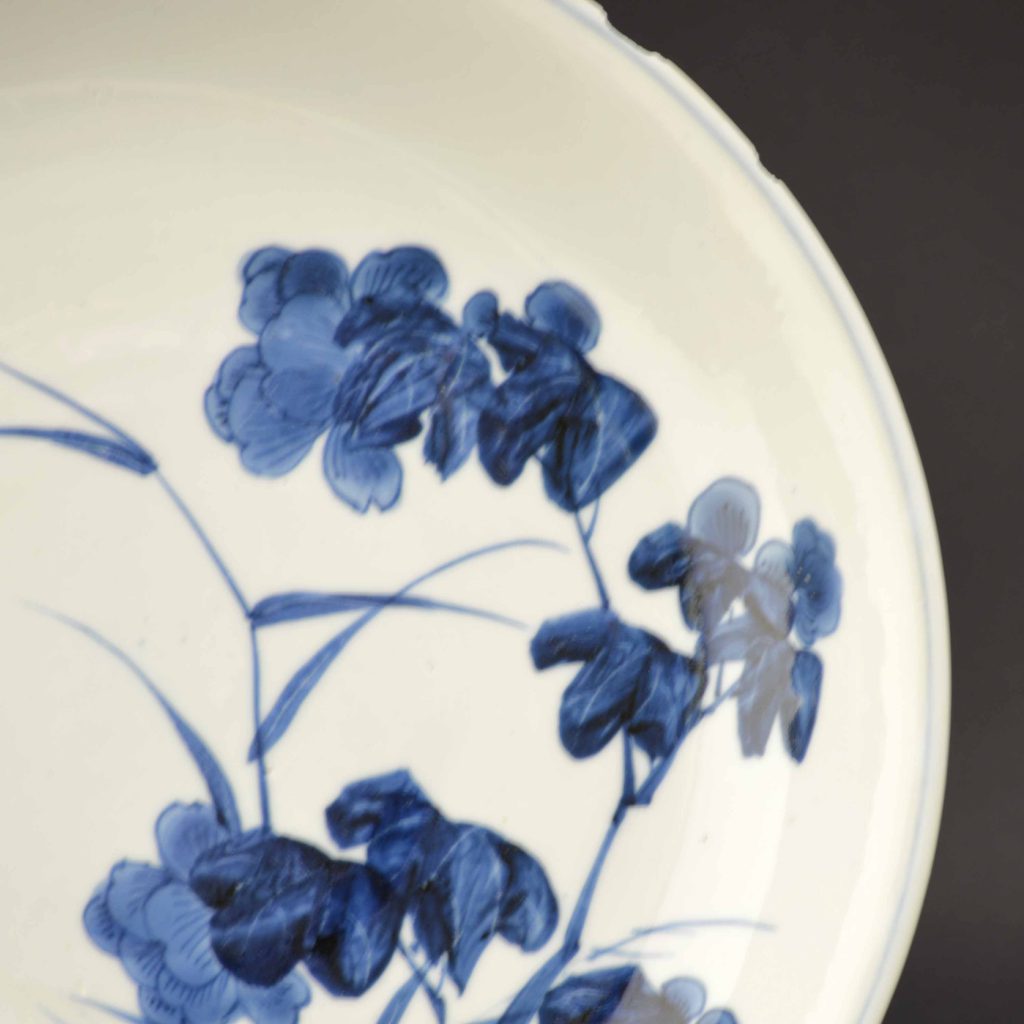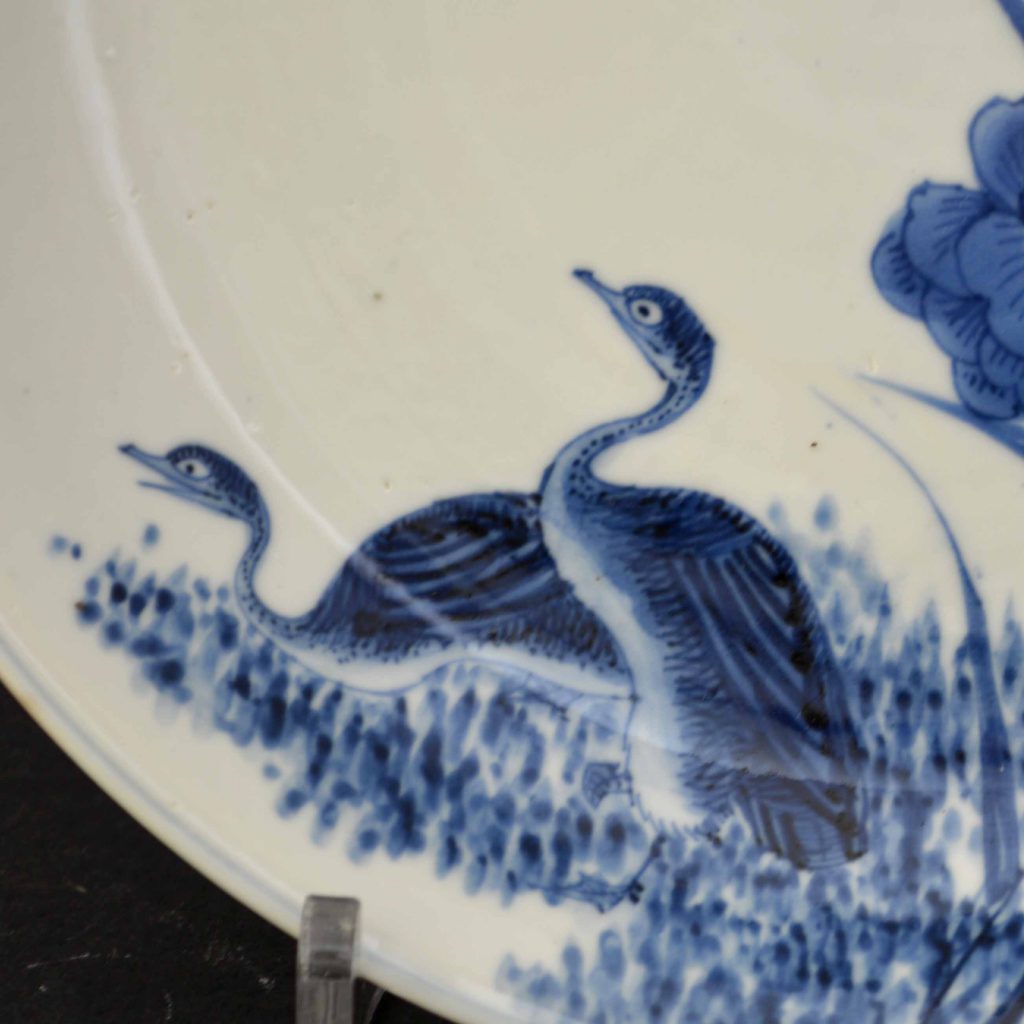
A Kangxi Blue and White Porcelain Dish Painted with Geese c.1700
A finely painted Kangxi Blue and White porcelain dish with two geese among flowering grass and another flowering plant. The base with an apocryphal Ming Jiajing mark.
SOLD
- Condition
- Poor, several large chips, one of which is polished. Some of the chips are rather large but are mostly visible on the reverse.
- Size
- Diameter : 21.2 cm
- Provenance
- Nicholas de la Mare Thompson (1928-2010), the grandson of the author Walter de la Mare spent his career in publishing. He started at Nesbit where he was editor of the Janet and John series of children’s books but not all of his career was so safe. He wrestled with W.H. Smith over the content of Madonna’s raunchy Sex book on behalf of Paul Hamlyn’s Octopus Group and defeated Margaret Thatcher over Spycatcher. He could not bare dogma or hypocrisy. It was hardly surprising that as a committee member of the O.C.S. he had his own ideas. He read and could recite great swaths of the articles of the Society, he used this not to attack but to stimulate debate. He approached the Society in the same way as he approached his understanding of Chinese ceramics, by stripping it down and starting again using clear empirical thinking. He was very concerned the Society was open to all and was run for the benefit of all members. Nicholas came from a family of collectors, his love of oriental ceramics was broad but his focus was on early monochromes, especially those from the Song dynasty. He bought what he loved, what he thought had merit, not what was said to be good, and certainly not anything because it was fashionable. He didn’t have a stamp collectors approach, filling in the gaps of pre-existing ordered collection, rather he would react to an object, feeling it was right for his collection. Sometimes he wasn’t sure if it was right for his collection or not. He would then “borrow” pieces and live with them, other times he would ask his wife Caroline, who’s eye he trusted, if he should keep the piece or not. He was amused because I was often able to know if he would keep a piece before he did. We discussed “pots” endlessly, he loved to talk about ceramics with a wide variety of people, and enjoyed the company of others on O.C.S. trips as well as in discussion groups or anywhere else. Later on he combined his love of Chinese ceramics with his love of books by extending his library to include rare early books, he used these to trace the development of collecting and scholarship in the 19th and early 20th century. He was fascinated by earlier scholarship, what was not understood but also what they understood and we have lost. He was always reading and wanted to know more right up to the end, he didn’t see impending death as a barrier to knowledge or indeed collecting. The week before he died he questioned, if only for a second, whether it was too late to buy another pot for the collection. He concluded it was not, he was a true collector. Nicolas died on the 25th of April 2010 at the age of 82 after living with cancer for two years. He leaves behind his energetically supportive wife Caroline and his three children. He was a kind, gentle and incredibly civilised man with a very sharp mind and dry sense of humour, he was passionate about the Society, its aims and its members. He was an incredibly supportive and thoughtful friend and is very much missed .
- Stock number
- 24855
Information
Apocryphal Marks on Transitional and Kangxi Porcelain :
Apocryphal marks are frequently encountered on Chinese porcelain particularly on Kangxi Blue and White Porcelain (1662-1722). These retrospective six character marks started to be used during the chaotic end of the Ming dynasty at a time referred to in the West as the Transitional period. From what I have seen it appears as if they were first used during the reign of Tianqi (1621-1627), at this period they are commonly encountered on pieces made for the Japanese market but are more rarely found on objects made for the West. Only a select few Ming marks were `copied`, the six character mark of the Ming Emperor Chenghua who reigned from 1465 to 1487 being by far the most common, other Ming marks include Jiajing (1522-1566) and less frequently Wanli (1573-1620). These marks were not added to the piece to deceive, but more as a sign of reverence, and maybe even aspiration, to the great potters of the Ming dynasty (1368-1644). Occasionally they are used on pieces copying Ming Porcelain shapes and designs, these objects were probably made for collectors who could not afford the Ming original. The marks on these `copies` are often drawn in the calligraphic style of the Ming originals.


